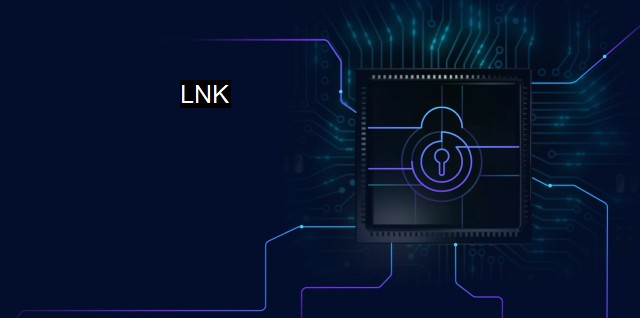What is LNK?
Understanding LNK Files and Cybersecurity: How to Protect Yourself from Malicious Attacks
LNK is a file extension type associated with Microsoft Windows. An LNK file, more commonly known as a shortcut, is a small file primarily used on the Windows operating system. It doesn't hold any content on its own but points to an application or other kinds of files already present within the system. When clicked on, the system follows the pointers and opens up the related file.In the context of cybersecurity and antivirus measures, LNK files hold a more ominous implication. These seemingly harmless files can be utilized maliciously by cybercriminals to bring harm to an individual's computer system. When manipulated incorrectly, LNK files can pose a significant threat to system security and safety.
Hackers create malicious LNK files disguised as harmless applications, confounding new or unaware users. One purpose behind crafting a pernicious LNK file is to accomplish application or script exploitation without immediate detection. Many previously uncovered malware has employed this strategy to distribute themselves by auto-executing script operations via manipulated LNK files. The underlying malicious instructions latched to an LNK file can take control over a system, leading to harmful actions like harvesting personal information, damaging system documents or applications, utilizing system resources to mine cryptocurrencies, or even holding the entire system hostage through a ransomware attack.
Perhaps the most notable example of malicious use of LNK files is the infamous Stuxnet worm discovered in 2010. The worm utilized LNK files to exploit vulnerabilities in Microsoft Windows and spread the malware stealthily not only through the internet but also through infected USB sticks, demonstrating the extensive exploitation capacity of LNK files in cybersecurity.
Antivirus systems, therefore, take an essential place in tackling sketchy LNK files and their associated threats. Modern antivirus software is well-equipped to deal with malicious LNK files and protect the system. This protection is primarily accomplished by scrutinizing all downloaded files, searching for known malware forms (signature-based detection), and evaluating any strange file behaviors that may suggest an attack (behavior-based detection). The antivirus mechanisms can either refuse access to a flagged file or remove any dangerous components related to it.
The role of antivirus becomes even more critical with the implementation of machine learning and AI-based tools. These advanced tools, accompanied by regular software updates, ensure that even the most recent and complicated threats can be neutralized effectively. These capabilities become crucial in today's digital era where threats continuously evolve and resistance against traditional antivirus systems grows stronger.
Among preventative measures user can follow, the most basic is to be cautious while downloading or running LNK files from unknown sources or intervals. Users should also ensure an up-to-date antivirus system. Default settings should be adjusted to explicitly define what actions should be taken when a threat is perceived. Regular system scans contribute to finding hidden or unperceivable malware. Another protective measure is timely system updates that contain patches to handle known software vulnerabilities that could be exploited by malicious LNK files.
While LNK files are an integral part of Windows' functional landscape and convenient in day-to-day operations, the potential of these files being a carrier of malware can not be overlooked. Therefore, user awareness and adequate antivirus coverage are fundamental in maintaining secure and safe cybersecurity environments.

LNK FAQs
What is an LNK file and how does it relate to cybersecurity?
An LNK file is a shortcut file on Windows that allows the user to access a program or file with ease. However, cybercriminals are known to use LNK files to execute malicious code or malware on Windows systems.How do I prevent LNK files from infecting my computer?
One effective way to prevent LNK file infections is to regularly update your antivirus software and enable real-time scanning. Additionally, avoid opening email attachments or downloading files from untrusted sources.What should I do if I suspect an LNK file is malicious?
If you suspect an LNK file is malicious, do not open it. Instead, run a full system scan with your antivirus software and delete any suspicious files found. It is also recommended to report the incident to your IT department or cybersecurity team.Can LNK files be used for legitimate purposes in cybersecurity?
Yes, LNK files can be used for legitimate purposes in cybersecurity. They can be used to create shortcuts to security tools or scripts that help improve the security posture of your system. However, caution must still be exercised to avoid falling victim to LNK file-based attacks.| | A | | | B | | | C | | | D | | | E | | | F | | | G | | | H | | | I | | | J | | | K | | | L | | | M | |
| | N | | | O | | | P | | | Q | | | R | | | S | | | T | | | U | | | V | | | W | | | X | | | Y | | | Z | |
| | 1 | | | 2 | | | 3 | | | 4 | | | 7 | | | 8 | | |||||||